Fraser Simons's Blog, page 4
November 29, 2018
The Poetic Prose Tethered To Memory In Void Star
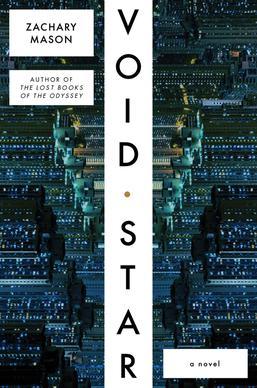
She looked into his other memory, the last eleven years of his life’s experience fixed forever in deep strata of data, immobile now, and somehow cold. Of course, she thought, I should have known, this is what death is, this stillness in memory.
Conveying a sense of a near future world in which the street finding its own uses for things ends up compiling moments where technology not yet here is antiquated or trash. A laptop acts as a delivery system for a “superior” education to Kern, a young man growing up in a Favela. He takes what he needs from the machine; reflecting and embodying the harsh lines of poverty and society in his own body. Kern uses technology to become a weapon. But he doesn’t think like one.
“Like sculpture, the favelas, but she reminds herself that, avant-garde rapture notwithstanding, they’re sinks for all the saddest ugliness in the world, that to set foot in them is to step back decades, or even centuries, they’re the last bastion of the old…”
Irina is a survivor of an experimental tech herself: an implant. Already antiquated due to their unpredictability and low survival rate, few people have them and they drop your life expectancy drastically. It also expands her memory, allowing her to interact with AI, which, in this world, has grown past human understanding; a new form of life. This makes her profession prestigious and lucrative.
But when she gets hired to figure out a problem with an AI that is ostensibly acting strange, it becomes clear that people with implants have a hope of interacting with AI by virtue of their own abstracted experience comprising their own lives.
Another character, Thales, is the son of an assassinated Brazilian prime minister who is the victim of a brutal car accident, an attempt on his life. To save him a clinic installs a similar implant to make up for the damage to his brain. Though he survives, he is a ghost in his own life. An approximated version of himself focused on the paranoia stemming from his trauma and fear, forever tethered to the memory of his attack. His implant allows for it to be a living memory instead of something that might fade over time.
The rich, too, are somewhat bound in this world. Everyone is, because everyone has the new mortgage: the mayo. A clinic that provides maintenance to the human body, allowing for an elongated lifespan…with the caveat that you need the treatments as early as possible in your life. And, of course, the payments are gestured at being vast sums of money. Even if you’re a part of the super-rich you may not get to live forever. Some believed the treatments were unstable and fictitious. Some only amassed a large enough fortune to secure only a slightly longer lifespan; a couple decades.
“Far be it from me to examine the motives of such a consistent patron of the applied arts. After all, the very rich aren’t like you and me.”
The main characters make up a stratification of class themselves. Irina’s lifestyle has enabled her to prolong her life, whereas Kern owns nothing at all. Thales seems to occupy a liminal space; one step in the world and one step out. The connective tissue bridging their lives.
Cyberpunk is usually frenetic but it’s clear early on Void Star prefers to linger. The prose are winding and beautiful and, in my case at least, extremely effective at slowing down the fiction during important moments, allowing the reader to dwell on them. It’s a subtle way of prioritizing and punctuating the more human aspects of the story over the overarching plot, in which puppeteering is done by the rich and powerful; which is the most predominate cyberpunk element in the book. But it’s the emphasis on the humanity of the characters with such detail that I found most progressive.
To offset this emphasis, the chapters are made to be very short, creating a sense of momentum. In not quite 400 pages there are 77 chapters! I feel like this will be either something a reader will enjoy or hate. Not much time is spent on technical details or expanding on information that might normally follow. Instead, much like Gibson, more time is spent on how something feels. Both from a character perspective as well as in the syntax and cadence of the text.
“Below her are the lights of the valley, like burning jewels on a dark tide. The Bay is a negative space around them, its leaden ripples picked out in the moonlight. There is, Irina realizes, a pattern in the flawed latticework of lights, something deeper than the incidental geometry of buildings and streetlight, to which the city has, unwitting, conformed itself, and, with this revelation, what she had taken for single lights expand into constellations, and each of their lights is a constellation in itself, luminescent forms in an endless descent, and the city is like a nebula, radiant with meaning, and this is how she finally knows she’s dreaming.”
While the story is about these three characters with implants converging as an insidious figure appears to be collecting the memories of those with implants; by any means necessary, it appears. Seemingly random events coalesce in a satisfying way. There are twists and turns I didn’t see coming and there is a kind of resolution that is both emblematic of cyberpunk and against it.
For me, part of why the book was so intriguing and fun to read was the effect the prose had on me, personally. Just as Irina remembers a fading memory of a past love, willing her last conversation with him to replay in such a way as for it to be as real as the present, the prose also made my own mind meander because of descriptive and evocative word choices that alternate in the prose. It’s hard not to get wrapped up in your own thoughts. It feels like it’s designed that way. Springboarding sentences for your own subconscious. While it took me out of the fiction, it is also rare that some text can shift me into my own thoughts and I appreciated it a lot in this case.
“He studied his face through her eyes, the image echoing between them, and then she watched as words coalesced—language like foam forming on black seas of thought…”
It’s been some time since I read cyberpunk with a voice like this. It’s also more accessible than most authors who tend to write like this. Instead prioritizing a more cerebral plot rather than dwelling on human moments like this one.
There also isn’t a recycling of cyberpunk tropes to the point where technology makes no sense, such as the case with a lot of first wave cyberpunk books. Instead, there’s recontextualization of some of a few; like a patch or update for the more relevant tropes in the genre. Rather than technophobic musings, Zachary Mason openly wonders about the importance of memory and the potential application of augmenting technology surrounding it. He’s done research on AI and so, this seems to more accurately posit what interactions with some might be like. As well as contribute to a more interesting fiction through relevance.
Whether it’s Irina trying to negotiate a precarious precipice on the fringes of her own or others’ memory, or Kern fleeing for his life with nothing to rely on but the words of a stranger in his ear; it is all rooted in a sense of place. The world feels vibrant and real. Lived in. There are some repercussions from climate change and the scale and disparity of class stratification rooted in the thoughts and feelings of individuals instead of the somewhat typical infodump conversations of the genre.
It's a poor sort of memory that only works backwards. I wish I could just slip up and down the timeline as I pleased. It's almost what I do anyway.
I wondered throughout if it’s written in the heavy prose style to have the reader wander this new alien cyberspace, approximating their surroundings with translations of data gathered in the lived experiences of their disparate lives. The real bled in with the digital for me. In describing the characters’ perspective in detail, you begin to understand the significance of a viewpoint other than your own.
“…the abstract geometrics spasming across the TV screen are settling into a deep crystalline blue, the same as the color from her implant’s diagnostics, which somehow seems natural, as though her history pervaded everything, and the world were the palace of her memory.”
November 20, 2018
Living Under Glass In Implanted

The data stored in her blood can save a city on the brink… or destroy it, in this gripping cyberpunk thriller.
When college student Emery Driscoll is blackmailed into being a courier for a clandestine organisation, she’s cut off from the neural implant community which binds the domed city of New Worth together. Her new masters exploit her rare condition which allows her to carry encoded data in her blood, and train her to transport secrets throughout the troubled city. New Worth is on the brink of Emergence – freedom from the dome – but not everyone wants to leave. Then a data drop goes bad, and Emery is caught between factions: those who want her blood, and those who just want her dead.
Within a techno-thriller-like framework Implanted’s author, Lauren C. Teffeau, weaves solarpunk and cyberpunk themes into a rich setting. New Worth is structurally crafted to evoke a sense of the outside world after radical climate effects have occurred. The stratification of class is literalized, with the rich living high up, enjoying the sun and the best goods the city has to offer. The poor live in all but darkness and have society geared against them in that there’s more crime and the cleaning robots don’t come around that much in the lower levels, etc.. The layout of the entire city is meant to feel like a vertical urban sprawl with only the aesthetic or veneer of a green space, a neat take on an urban jungle.
Emery comes from the terrestrial district down below, with her parents working her ass off to get her in school and land a job that’ll eventually enable them to move up. She’s short, she’s brown, and she’s completely bought into the status quo. Almost. It’s immediately clear early on that she’s a trauma survivor who goes to a virtual reality arcade to hone her skills. A particular skill set that she uses to claw back some control or agency in her life by hunting down people who prey on marginalized people, usually women; removing their implants and selling them.
In her personal life, she’s closed off and secretive, slow to trust—focusing on her coming graduation and landing a decent, but boring job to help her family move up, literally! Of course, this isn’t to be. A corporation blackmails her into joining their ranks, cut her off from everyone, even faking her death, and trains her to be a courier. Porting important information around in her blood, co-opting her very body for their own agency.
Importantly, she was close to fully synching with Rik, a person she plays the arcades with but has never actually met.
Implants are the heart of the high tech in this cyberpunk fiction. Everyone has one and it’s installed fairly early on, else they lose some of the higher functionality, apparently. It allows people to sync with one another, sharing their emotions and thoughts so long as they’re connected. All of society is built on this technology. Citizens’ identities and the way they interact is completely changed by their implants. Social structure and corporate structure is built on the idea that everyone has one. Except… not everybody does. The Disconnects are people who reject this idea, unwilling to trade their freedom and natural human interactions for a device that essentially keeps the populace under the city’s thumb. All the information that is disseminated from them is outright trusted. People no longer trust their own senses, they trust the information being fed them. Social interactions have gone “Online” even more, essentially.
Joining Aventine, the corporation that has blackmailed her, eradicated the one connection she was building toward having despite her trauma. It’s the ultimate way of letting someone into your life, as their presence would always be there with you.
Fast forward months later and a job goes wrong. The information she’s carrying turns out to be important enough that both the corps and the disconnects are after her and she has to risk finding and asking for Rik’s help, who thought her dead.
What ensues is a fairly typical technothriller structure. The slow lead up filled with infodumps and personal stakes followed by action as she has to use her knowledge of the city to navigate her way to any sense of freedom. It’s a cyclical and satisfying narrative that doesn’t feel bloated but does take a while to get going. Luckily, the whole thing is a fast read so it’s not a big deal.
There are some more interesting aspects to the story though, deviating from cyberpunk and the techno-thriller formula. The underlying feminism to the fiction was always nice, even if it made Rik kind of annoying sometimes. The agency of the story is always with Emery, which means when she screws up it’s on her; just as the bulk of the decisions are her own. Rik is a well-off white guy in the higher levels who is a fairly good blueprint for a good supporting character. He sympathizes with the disconnects and acts of as a lens to fill Emery in on the details of the New Worth she herself is unaware of. It works well. But he’s still a little wrapped up in his own privilege in the story, in my opinion. Which, I think is how it is meant to be.
The story is all from Emery’s perspective. Usually, I don’t end up liking something written in this way but it’s pulled off nicely here. Emery is likable and well fleshed out and her voice, while very casual (the only meh part of it for me), ultimately culminates in good character work. There is less prose but the themes are worked in such that there’s a decent amount of emotional payout because of the perspective.
It’s also somewhat subversive. It’s less frenetic than traditional cyberpunk, which usually has new terminology and infodumps that take place during action that doesn’t relent much. This is decidedly more low-key, making it also more accessible.
It also feels solarpunk in that it’s not entirely nihilistic regarding technology or the future, in general, despite the ecological disaster. There are explorations of being responsible and not simply ignorant when trying to understand the outside world that this society looks forward to. Not doing so having real, lasting impact that’s detrimental to humanity. The characters have low points but even when the omnipresent corporations illicit very little hope, it’s disillusioned later. Emery isn’t looking to simply save herself, she has to consider what her actions will do to others; decidedly not traditional cyberpunk where the protagonists are anti-heroes. Which, I like a lot. This feels like a more relevant cyberpunk story because of this.
The city finding a new use for things is also present but… not in the way you’d expect. It’s a living, breathing thing aesthetically because it has technology to counteract the greenhouse effect of living under glass, but also has maintenance tunnels and spaces for sub-cultures that are used by her as a courier to get her job done, even when that job eventually becomes eluding everyone. It felt like a well-realized setting with a purpose beyond the overcapacity of humanity resulting, again, in a nihilistic narrative more indicative of cyberpunk.
She needs to integrate into a corporation. Dressing like them and doing as they say. There is not the normal freedom of expression found in cyberpunk here, that’s been taken from her and, though subtle, I thought was an interesting way to turn it around later when she’s running from the corporation using the tech and the clothes they gave her. Rather than cybernetics being the thing used to subvert power structures, it’s a more literalized repurposing. Pretty cool.
Implants are both good and bad. Therefore the “good”, the “bad”, and the morally grey are put squarely on the shoulders people. Which ends up getting rid of the technophobia trope, too.
It’s also always great to read a female protagonist that isn’t sexualized. Her voice and thoughts make sense, both in just the case of being a believable character, but also in terms of being respectful of a trauma victim while not skirting the issue. She has internal things to work out as a result and the narrative is about that. It’s not only a blip of a character detail to make her sympathetic. It’s how you come to be able to empathize and understand her thoughts and decisions throughout the entire story.
Surprising, thoughtful, and good; Implanted, I hope, is the start of a distinctly feminist cyberpunk wave of literature striking out against the cyberpunk visual tropes pervasive in visual media today that people seem to be waiting for. People like me!
November 13, 2018
Is The Player Of Games A Better Snow Crash?

Content warning regarding some key plot points of both The Player Of Games and Snow Crash .
I’m not sure which book is more popular. If you’re running in cyberpunk circles, Snow Crash is heavily lauded; even used as somewhat of a framework for post-cyberpunk literature. That is, cyberpunk which struggles and subverts the tropes that were established during the movement, or first wave of cyberpunk literature.
Snow Crash satirizes the genre to varying degrees of success. However, no matter what you think about the novel the most interesting part of it, at least for me, has to do with the reimagining of The Tower Of Babel myth. Snow Crash is a drug created to make the population susceptible to inputs that would essentially be able to “program” humanity.
It posits that the ancient Sumerian language is more-or-less the first speech mankind ever had. It also made people susceptible to programming, drawing a parallel between the human mind and a computer running a BIOS. The programs, called me, running on this BIOS “organized” Sumerian culture. Used, of course, by the people in power to maintain the status quo of their own devising.
An ancient god developed a counter-hack to this, however; creating a program which ended the enslavement of the mind by allowing other languages to develop by making the brain no longer process Sumerian. Losing the original language… but gaining many other languages.
Snow Crash, the drug, is an attempt to bring back this programming by way of an addictive substance and a computer virus that hackers are susceptible to because of how they interact with computers.
Please keep in mind that is all very condensed and skirts some of the nuances of the plot line and myth. But Pretty cool, right? Language as a virus riffed on with computer viruses in cyberspace!
While this is the central plot, it sometimes doesn’t feel like it. In fact, it feels like it’s merely in the background because of the bombastic cyberpunk imagery and, in general, the sure amount of absurdism found in the book. The satirical notes that make it iconic also subvert anything actually important it has to say. The main character is called Hiro Protagonist and is a pizza delivery guy. Another, Y.T, is an underaged sexualized courier with very little agency. There’s cyber doggos, swords, avatars in cyberspace building worlds not bound by the laws in the Real World. It’s salacious and meant to be fun so the plot generally takes a backseat.
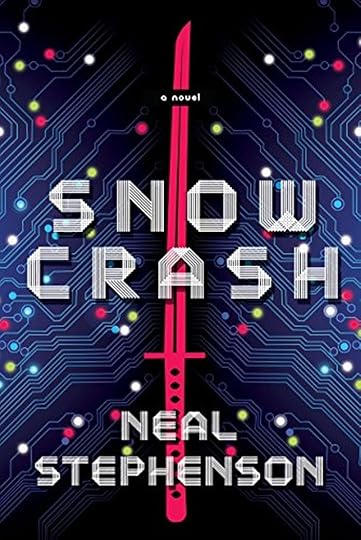
After recently reading The Player Of Games for the first time, I think it could also be classified fairly squarely as cyberpunk.
It has a heavy focus on exploring technologies which alter human life in meaningful ways. Not specifically cybernetics, but entire civilizations and their technological progress and how those dynamics have directly affected how The Culture interacts with The Empire. After all, the game is a sophisticated, futuristic technology and is central to the fiction. The stratification of class is perhaps one of the main themes explored, and actually influences the main plot quite a bit (as well as the ending). The flaws and evils of capitalism are also examined. The politics of the book are in line with cyberpunk, only really missing the aesthetic of DIY punk.
Punk attitude is here in spades, though. Someone who is meant to lose (and be subjugated while doing so) helps to show citizens the cracks in the foundation of their oppression when he stands up against The Empire. Pretttttty punk, in my opinion.
When Jernau Morat Gurgeh, a person who’s been designed from conception to live a better life than most people outside of The Culture; a civilization which is highly advanced and governed by their technological minds. Citizens of The Culture have traded, essentially, their cultural “will” for a good life where they only need worry about their own happiness. Advanced bodies which allow them to change their sex and live until they pretty much just want to die are featured. They are n ideal and Utopian society. Which is subsequently examined throughout the book.
Gurgeh is bored with this life and seeking something new. He generally wins the games he plays and has a pervasive aimlessness to his life despite his winning. He ends up treating his life, as well as others, like a game. This sort of uplifted existence has a pervasive apathy about it.
Circumstances allow him to leave society and go to The Empire. A society far behind The Culture… but have developed a game that is the ultimate expression of their society, named Azad. To interact with The Empire’s citizens he learns their language and he studies their game on a long journey across the stars.
To The Culture, The Empire is archaic in its power structures, which mirror our own; especially in post-capitalistic society. People regard specific sexes, of which there are three in The Empire, as either dominant and subservient. Those power dynamics permeate their language and their culture. But also the game Gurgeh attempts to master.
By consuming The Empire’s culture and the game, Gurgeh undergoes a fundamental change in himself. The way he thinks alters when he speaks their language predominately, almost forgetting The Culture’s own; which reflects the ideals and dynamics of its society. He begins to take on the characteristics of The Empire in order to win, which becomes his primary function and ultimate goal.
To win, essentially, he must become them. The only way to play and win Azad is to embody the ideals the game rewards in its structure, which, of course, are the characteristics The Empire holds dear when maintain it’s oppressive power structures over the majority of the populace.
“To Know Your Enemy is to Love Them. Only when you know them, can you completely annihilate them.” — Enders Game
This notion parallels Snow Crash’s posit that language is a sort of firmware for the brain, which then changes a persons’ personality and identity. And because it does this on a grander scale while rooting it on a personal level by way of the main character, the book is fundamentally “about” that. Its message and exploration is much better realized than Snow Crash.
In the end, putting these two books “against” one another for the central plot may even be good test to see what fans of the genre prefer.
They have similar explorations… but one is steeped in a rich aesthetic that satirizes pop-culture and cyberpunk (although, this aesthetic now ironically embodies cyberpunk for many fans of the genre).
The Player Of Games has little of the cyberpunk aesthetic but arguably explores some of the foundations of cyberpunk much more thoroughly, all the while maintaining the same notion as Snow Crash’s central plot. There is no myth in The Player Of Games, though. Just as uncomfortable a look at this specific facet of society the author could muster at the time, 4 years before the publication of Snow Crash.
November 5, 2018
The Classic Cyberpunk Setup In Sneakers
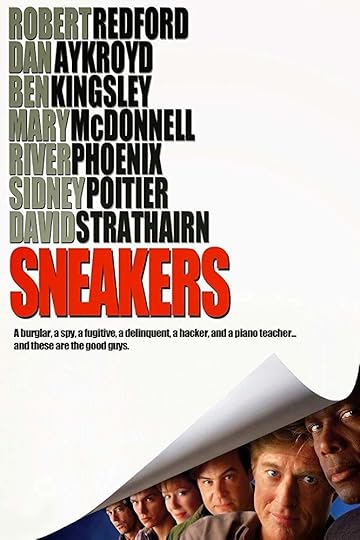
Warning: this article contains some spoilers for the 1992 movie Sneakers.
When you go searching on the Internet for the best cyberpunk movies you probably won’t find this movie. Released in 1992, Sneakers flew, and continues to fly, under the radar of many fans of cyberpunk. Cyberpunk 2020, the popular tabletop roleplaying game was published just one year before. Snow Crash, often regarded by fans as the point in which cyberpunk literature officially “died”, dropped the very same year as Sneakers.
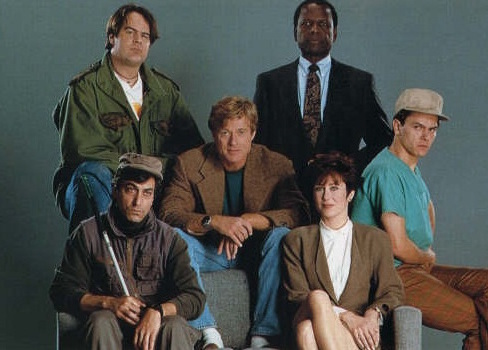
So just as the movement died (not the literary sub-genre, in my opinion) Sneakers showed just how much staying power cyberpunk would have.
Sneakers is a movie in which a gang of various misfits are paid to test the security systems of their employers. They make a living breaking into places, basically (although not a very good one, according to a sassy bank clerk). Just as all seems well, the leader of this group, Bishop, is confronted by government agents dredging up his past in order to strong-arm him into taking on a job for them; outright blackmailing him. So he goes to his group with two choices: do their job… or he goes to jail. He knows he can’t do it alone.
What is more classic than government spooks that know too much, acting as puppeteers, right?!
Of course, like most classic cyberpunk where you get a job from anybody, but especially the government, it can’t be trusted. The spooks aren’t spooks, what they’re hired to steal ends up being groundbreaking and cutting-edge tech that can break into literally any encrypted database, and the team is put in mortal danger.
In Hamish Cameron’s recent cyberpunk tabletop game, The Sprawl, the rules actually mechanize these double dealings from employers. That’s how intrinsic this framework is to classic cyberpunk.
Sneakers presents a viable framework from which to generate your own jobs to give to players in a tabletop game. It might even be the only movie reference that has a team of people with skill sets similar to what you can do in cyberpunk games like Cyberpunk 2020; everyone working toward a common goal without their own goings-on as more than B plot.
You’ve got betrayal, technology with massive implications for the future of the world (somewhat a hallmark in CP 2020 adventures in retrospect), the shady pasts of all the characters bringing them together as a group, the coolest hacker of any cyberpunk movie, Whistler; a blind man hacking the system with a customized deck that uses braille inputs.

Whistler in the movie Sneakers
And tying it all together, Bishop’s past ends up bringing in the main antagonist, an omnipresent like figure who is radicalized by the ideals Bishop once possessed… but has since shed for a less simplistic and more nuanced set of beliefs.
Although far from a perfect movie (there are some contrived occurrences in the third act that undermine the only woman of the team, which bugs me a lot), if you’re ever looking to run any kind of cyberpunk tabletop game, you could do far worse than to watch this gem of a flick.

In some ways, it’s the most faithful adaption of a first wave cyberpunk novel we are likely to see. Sneakers is an enjoyable and relevant cyberpunk movie, as well as maybe the only easily adapted movie to a tabletop game framework; making it useful, too.
What do you think? What other movies might lend itself to helpful frameworks for tabletop games, if any?
October 9, 2018
Breaking The Rules In Hotel Artemis
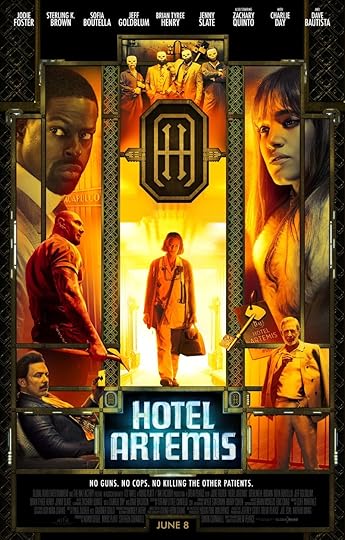
In a near future Los Angeles there stands the Hotel Artemis, a sanctuary for criminals with a full-service nurse—for members only, of course. When riots break out during a heist that goes unexpectedly wrong for a group of crooks packing futuristic tech, they make their way to the Artemis. To Sanctuary… or so they think.
What follows is a powder keg situation. As the nurse (Jodie Foster) and her fellow company employee of the hotel, Everest (Dave Bautista), a kind of enforcer for the rules of the hotel, take in various people in these misfits in need of help; it becomes clear that everyone has their own agendas to further within the hotel. Some seem pointed at other guests, despite the anonymity provided by the hotel (guests are only called the name of the suite they are staying in).
Waikiki has a brother and partner in the heist gone wrong and needs medical help. But the pair shortly discovers that what they stole puts them in mortal danger at the hotel. Nice (Sofia Boutella) is an assassin who only kills important people, Acapulco (Charlie Day) is an asshole gun runner.
At first, it feels like maybe Hotel Artemis is just another action flick set in a futuristic, John Wick hotel of assassins. But as the film progresses it becomes clear that surrounding the action there is a larger narrative taking place and, kind of an obsession, with “the rules”.
It becomes clear that all of the characters have these internalized rules. Whether imposed by the world or their sub-culture; or in the case of the nurse and Everest, the rules are a boot on their respective neck. Originally, the rules seem to be in place to keep them safe. At least, it’s a fair assumption based on how each of them recites the Artemis rules like a mantra, especially the nurse. Believing that if a rule is broken the whole place would fall apart. But really, they are the thing they clutch onto in order to maintain their sanity in a world breaking apart; just as the world around them is devolving and splitting apart because of a riot fueled, at least initially, by protestors, so too are the characters being stripped bare.
The primary throughline of the movie and, incidentally, why I think it’s cyberpunk; is the tearing down of these rules and how important they are to the story. Sometimes it’s to do the right things despite immediate and deadly consequences. Other times it’s to contribute to the ties that bound them in the first place. Societal structures are being ripped down everywhere you look outside of the Artemis but inside it’s a much more human and grounded struggle reflective of the larger one.
The most surprising thing about the movie is the nurse’s story, which gradually unfolds as visitors arrive and reveal more of her past. While not a movie that is particularly intelligent, it does break from the expected formula and roots it in an emotional place that becomes a lens for the other guests to view their own lives and perspectives, as it becomes clear that lives they know will be radically changed. There comes a moment for all of them to choose to follow the rules or not. And the choices form the most interesting aspects of the story.
Hotel Artemis is a gorgeous movie with a great cast, awesome technology, effects, and does more work than a simple action flick it initially appears to be. I ended up enjoying it a lot more than I’d expected. It’s strange that this movie flew under the radar and is very hard to get (at least in Canada).
October 3, 2018
Playing Eurotour & Converting It To Veil 2020
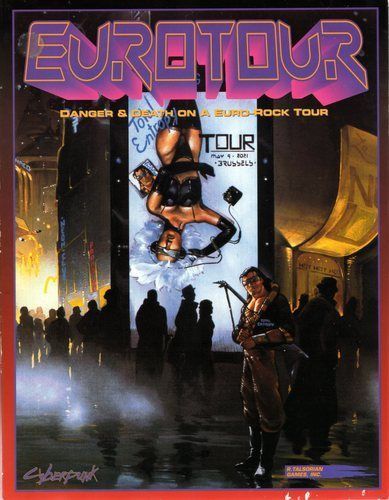
Published in 1993, Eurotour is a more problematic contribution to the Cyberpunk line. While the cross country, mega-adventure I ran previously, Land of the Free, was mostly just indicative of the 90’s marketing strategy targeting boys and men with disposable cash; basically a lot of sexualized women and some casual sexism. Eurotour has this as well, of course. But It also is, I imagine, why Mike Pondsmith recently has stated that the company and Cyberpunk line wouldn’t see supplemental materials from any writers who didn’t actually live in the specific region the content would target. Sounds like they learned their lesson, as Eurotour and Eurosource Plus appear to have drawn the ire of fans abroad at publication.
This adventure has a cyberpunk group make their way to a futuristic version of Europe in 2021. Jack Entropy, a reasonably well known rockerboy, is having a European tour and the punks are along for the ride. There are six modules that take place in a different country and city; each with a fairly different… I wouldn’t say tone exactly, though sometimes that is the case… objective and set piece, let’s say.
From having to retrieve the star from a drug-fueled bender on the town; to a party in Paris with an assassin that is a honey pot for Jack; to stopping a bomb going off on a floating stage in Venice, there’s a bunch of stuff to do. My favorite has the PCs on a mission to find a French artist that will be used as a publicity stunt, having the artist create a piece on a side of the building (illegally, of course).

From Eurotour
Each is pretty different and filled with fairly diverse characters. Some serve as a through-line for the meta plot; my favorite part of the book. At the back there are 6 options to choose from that select who is targeting Jack throughout the tour. While it’s ultimately up to the Referee and the dice to decide how much danger Jack is actually in, the neat thing about it is that your selection alter each module and have clues for the PCs to figure out who means Jack harm along the tour.
Each seems fairly fun and features some great art. Just like Land of the Free, these adventures also feature a weird dissonance. There is text that reminds you to portray a specific female character as strong and smart…and then there’s also text telling you to figure out which PC is hard up for a woman in no uncertain terms and embroil them in a plot that features some of that good ol’ casual sexism. I guess Cyberpunk writers reaaaaally love honey pots; if Land of the Free and Eurotour are Representative of the adventures overall, anyways.
Basically, because it’s written in the 90’s you can expect some sexist tropes that is at odds with some of the goals of the text. However, just like Land of the Free, the art is in contrast with this, featuring more diversity than you’d expect. The art director clearly was a bit more aware than the three writers. I’m guessing that adventures that remind you to portray a particular woman well vs the very tropey ones may be different writers. But it leads to, as stated, a weird dissonance and hinders the overall product.
The other thing I had a problem with is the final adventure, which has the characters caught up in a very weird tonal shift as they’re coerced into stealing the crown jewels. Uh, what? Up until then they’re like weird side hands for the project that deal with all these requests and threats to Jack and the tour. Suddenly they’re off on this module that is roughly double the length of the others and seems completely at odds with the other content. Another break from what the goals seem to be leading up to it.
Overall, I’m still running it. I’m just cutting out a lot and changing some things up. More on that below.
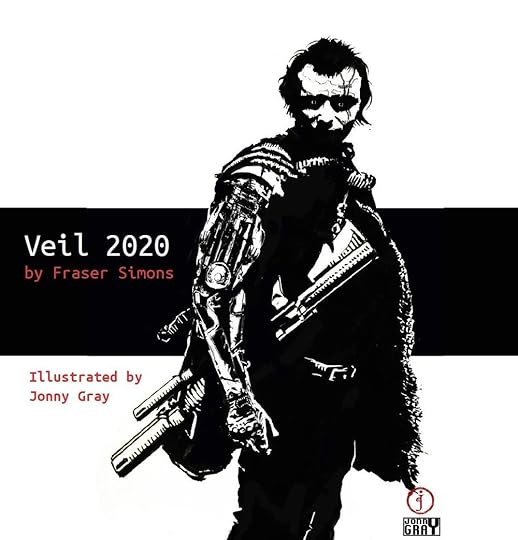
Converting To Veil 2020
I’m running this game for The Gauntlet this month. 4 sessions and six adventures. While Veil 2020 cuts out a lot of the time spent on skill checks and long combat engagements, I doubt I could squeeze it all in. Luckily, two or so don’t speak to me much anyways, so I cut them out.
The four sessions breakdown will go something like this:
Make characters and then get them working the initial concert. Then transition them into going after Jack Entropy as he goes on a bender. It’ll take them to shady parts of town, a casino run by the triad, and a weird club with a jungle theme. (This will probably take 2 sessions as they also need to make characters.)
They’ll travel to Brussels and are sent to find an artist the tour wants to hire for a publicity stunt. Introduces a mysterious Interpol agent.
Finally, the tour is in Venice and a bomb thread is called in and the killer is
revealed.
Depending on how much we get done I may be able to add some other things from other sections in there. But I imagine this will most likely consume all 4 sessions, which are 3 hours long each.
I’m also finding my own art for the main cast of the tour because they’re all white or Asian; getting rid of Jack’s “input”(term for girlfriend, nice.), also referred to as the ornament, who also happens to be an Asian woman. Yeah, pass. I’m also changing Jack Entropy to essentially Ruby Rhod from The Fifth Element, played by Chris Tucker and, while not an alien, will be non-binary, I think.
I’ll shop for images on my Veil 2020 Pinterest and add them to the roll20 room so the cast of characters are always accessible there.
I’m also expanding Veil 2020 to allow for a little bit of an easier conversion of these Cyberpunk modules. I’m adding the option of using Hit Dice instead of Hit Boxes (basically Harm boxes found in most Powered by the Apocalypse games). Depending on the NPC’s level I can simply roll the number of d6’s equal to it and get their hit points, using the rest of the information provided by the adventure for flavor. Simple. To make them harder or easier to deal with I can increase or decrease the Hit Die; d4 or d8, etc. This will be a good opportunity to test this out and see how it works and scales with weapon damage already established.
I’m also going to draft a table for critical hits and add on chips from Cyberpunk 2020’s core book. I also hope to add more cyberware and fashion to this expanded version.
I’m excited to be returning to Veil 2020 this month. It’s always a fun time and easy to run!
August 27, 2018
Playing The Embodiment of 90's Cyberpunk, Land Of The Free, With Veil 2020
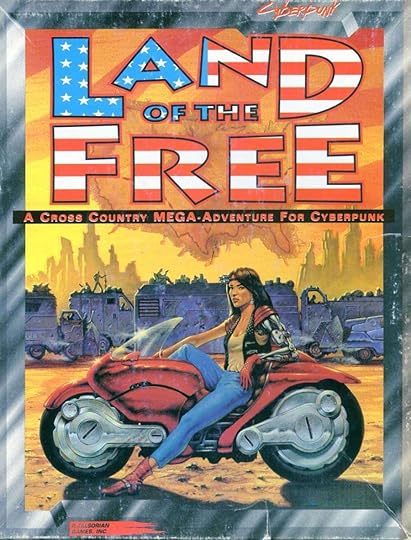
"It all started with a simple extraction..."
Originally published in 1994, Land of the Free is billed as a cross country mega-adventure for the Cyberpunk line of tabletop games popular in the 90's. In this respect it certainly delivers. It also states that it should take about 8 sessions to complete, which I don't think is realistic but more on that later. In this adventure, the punks take on a mission to extract Adriana Young at the behest of her father, Dr. Francis Young. What ensues is the PCs in a cat and mouse race across the country being pursued by her employer, Narcoss, with numerous set pieces depicting what has become of the U.S in the setting of Cyberpunk 2020. The expanded setting can be found in the campaign book to this adventure, Home of the Brave.
I’m not sure how long a session the author had in mind, but it took us 11 sessions to complete the game using Veil 2020, a rules-light, modified system based on my own game, The Veil. The system truncates conflicts such as long firefights and other conflicts, designed to specifically be able to run these old-school adventures without the crunch. Our sessions were three hours long and the table was drop in, drop out—resulting in maybe a little bit of time being chewed up by new folks joining. However, the system massively reduces the time it takes to get through encounters and conflicts so didn't contribute that much to the increase in expected sessions. I ended up skipping some areas in the last 20 pages or so to nail the pacing I wanted and cutting out some unwanted, problematic content. Otherwise, it probably would have been 12 or 13 sessions.
I ran the adventure rules as written. It was my first time using a module/adventure. Ever. And I wanted that experience to be as close to what the module intended as possible. Time has certainly brought out some blemishes in the adventure. Particularly a lot of sexualized women in the module, most often Adriana Young herself. Sometimes even with weird connotations. For instance, a ninja set out to kill her on a plane might be introduced to the players via hitting on her; after all, she is extremely attractive, the author suggests. There is also a honeypot later in the module, in which a PC is meant to just wander away and witness a woman in lingerie, drawn to music in a house; later being possibly captured by her as she is, of course, a ninja. Each woman in the text is depicted in weird, model poses very indicative of the times. There was also some stuff x-carded at the table, such as going to the south where puritans are running around with confederate flags. That kind of stuff.
Adriana Young herself is also a plot device for the players to have their morality tested. Spoilers! A large reward keeps being offered for her to be turned over, as it is revealed that she is not only a clone but also, ala Jonny Mnemonic, carrying secrets from Narcross in her cybernetic mind (in the first couple pages of the adventure but revealed substantially later in the story to the players). The main questions posed via Adriana’s existence are ones that were explored in media like Blade Runner already. If she’s a manufactured being, is she human? How would the world react? How do the players react? Will, they sell her out for a 1,000,000,000 euro bucks or stick by her, ostensibly as she’s made friends with them as the story has gone on.
While these questions are interesting in 1994, they feel somewhat dated now; much like the sexualized art. I did appreciate that the whole point of the adventure was for the players to learn that she is a person like any other, though. Literally spelled out in the module at the end. I imagine that when this was run when published it would feel much more substantial than now, as this was not a divisive issue for my players at all.
It’s still fun to go through the motions in the module, however. After all the locations are well realized, the characters interesting. It has more diverse art than some do now, even! I was pleasantly surprised in that respect.
Everyone had fun, including me. We basked in the retro cyberpunk aesthetic. Old brick phone, 90’s style, over-the-top action. They stuck it to the man every chance they got.
While the sort-of grand finale at the end was predictable, the players still enjoyed the cheesy nature of it all in keeping with the 90’s aesthetic. You can still get a lot of enjoyment from these adventures and I learned a lot running this one. I plan to run Eurotour next, in fact.
You can find the actual play of those sessions on my YouTube channel here:https://www.youtube.com/watch?v=cr13_...

System-wise, Veil 2020 is extremely simple. There’s one roll which encapsulates the stakes of a situation. Players say what they wish to accomplish, the Referee and player set stakes for the role reflecting the context of the situation, and the player rolls 2d6+modifier. The modifier comes from what the player character is feeling, distilled into 6 core emotions which are assigned modifiers. In this way, the players are rooted in their PC throughout.
They can also roll normally, with advantage, or disadvantage depending on their fictional positioning, determined by 3 classes (heavily inspired by The Whitehack). There are skill jockies, melee fighters, and hackers, basically. But they’re left up to enough interpretation that many different character concepts can fit into those three categories. Folks could play Shadowrun classes in the game easily, should they want to, for instance.
PCs gain experience for completing their missions and Eurodollars, the currency in Cyberpunk 2020, is used in Veil 2020 as well. When you accrue EB in service to subverting or harming an establishment which perpetuates capitalism, that money also is counted as experience. With each level, players choose from two different choices of advancement (and fictional positioning).
There are, of course, gear lists and cybernetics the players may choose to augment themselves with as well.
Otherwise, that’s pretty much it. This simple system worked well in the module. Stating out the antagonists was easy. Corresponding to their level I chose the same upgrades as the players, or else, if that didn’t make sense for the particular villain or mook, I simply had them deal more damage or be able to take more harm with each level. Easy peasy.
You can find Veil 2020 over in The Gauntlet gaming communities’ monthly zine: Codex; featured in Codex Chrome 2 along with some other awesome cyberpunk content. It is no longer in their Patreon feed but should be available for purchase via DrivethruRPG soon.
I’m toying with the idea of making a Veil 2030. The word count prevented me from going into more detail and I was also not able to get chip upgrades in the game (ala Hardwired). Having an expanded edition with some additional guidance and more gear and cybernetics is appealing, as I plan on using the system to run a bunch of content and perhaps craft my own.
Let me know what you think in the comments; interested to hear what people think of that idea.
August 21, 2018
Exploring Solarpunk In Glass And Gardens

The exciting thing about solarpunk is, as the forward talks about in Glass and Gardens, uncharted territory. Rather than proclaim what it is with a tightly curated collection of fiction focused on a specific notion, the anthology instead chooses to give a voice to a wide range of people; asking what solarpunk is to them and encouraging the reader to consume and talk about the genre the themselves. Through critical thought, as well as a wide range of public opinions informing the discourse via reviews, their hope seems to be to arrive at a definition not solely derived from academics.
Some of these stories may be better classified as eco-fiction or climate fiction. But this idea of handing it over to everyone to define is a romantic notion that has a lot of traction with me, personally. I often wonder what cyberpunk would have been like if the Internet was a little bit more accessible then. Would more people of color and marginalized people contribute to the first wave of cyberpunk and drastically alter the landscape of those formative years? I think so. After all. They did arrive; just after it was proclaimed dead.
This anthology seemed very diverse with a wide range of stories. Some of which I liked, others I didn't; kind of to be expected in any short fiction anthology. Often I'm attracted to cyberpunk because of the frenetic pacing inherent in much of the fiction. There is some meandering in these stories and sometimes I struggled to ask myself where the "punk" was.
In keeping with the objective of the forward, however, I think this anthology successfully probes science fiction stories that might be solarpunk in order to find the core of solarpunk. Even with stories that weren't for me, I still appreciated the larger framework of questions being posed to the reader. In the end, this probably hinders the book as an overall text but it is admirable that they stick to their guns, so to speak.
For me, just as with cyberpunk, the punk aspect is important. I want some form of resistance, some kind of dissent or critical thought against authority and systems in place; stratification of class, that kind of stuff.
The solar part, in my mind, is up for grabs, though. What does that really even mean? I don't think the general consciousness is aware of renewable energy and specialized technologies coming out of that sector. And in that respect this book is great. Because it's short fiction and not hard sci-fi a lot of isn't explained as much as I would have liked, but neither is it New York 2140, a novel that I could not get through because it is pedantic in its attempts to educate you about what felt like literally everything.
New technologies, new thinkers, new ways to imagine our interactions with others and the planet are all here. These stories coupled with a bit more focus on dissent, which I think we need right now more than ever, is exactly what I'd like to be reading right now. I feel like this sub-genre and its formative years are some of the most exciting things to sprout from cyberpunk and science fiction. Does it have to be hopeful? I'm not sure I care, to be honest; stories that do either would be fun to consume, I think? Plenty of Solarpunk in other anthologies have short fiction that isn't very hopeful but situates itself into the sub-genre by way of these extrapolated renewable technologies and punk aspects.
I hope that solarpunk is as eclectic as cyberpunk can be, should you go looking. This approach is a great way to define the sub-genre and I'm excited for more anthologies like this.
Overall I gave the book a 4 out of 5.
August 15, 2018
Defying Expectations In Upgrade
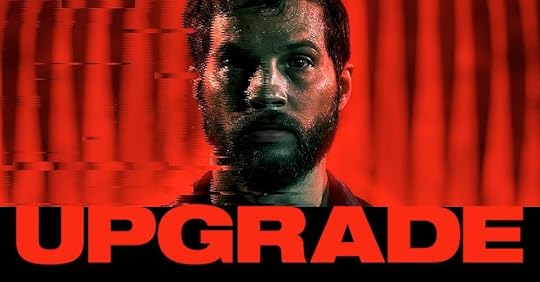
From Upgrade's trailer, it appears to be a simple revenge flick with a premise similar-ish to Robocop. Grey Trace loses his wife and the use of his body in a brutal, seemingly senseless attack on the couple, leaving him a quadriplegic.
When a mysterious benefactor offers to help him walk again by implanting an experimental technology called STEM, Grey gets the opportunity to regain a normal life. STEM, however, ends up being a lot more than a piece of tech that can transmit signals from his brain to his body enabling full use of his body again; it's actually semi-autonomous evolving program, too.
Based on the trailer I expected this partnership of sorts to primarily be the means of which Grey can enact his revenge and a chance to illustrate the hyper-violence emblematic of these kinds of movies; coupled with the "funny" tone shifts, of course, circumstances usually accompanying this trope.
While the expected formula is present in Upgrade, what follows is a far more complex and clever exploration of a near future in which technology has become even more integrated into daily life than present day. Self-driving cars. "True" smart homes. A sky full of drones; you get the idea.
Grey, in somewhat typical fashion, isn't an outright technophobe because he still tolerates and uses it... but has certainly seen how technological advancement has impacted his own life: removing the human equation from many things he himself take a great amount of joy in; repairing and restoring cars in a world where the rich have auto-cars and there are auto-taxis, etc. There's a hint that he may have lost his job to automation as well at one point. His wife, on the other hand, is the opposite. Working for a corporation that is in the tech sector and enjoys the ways in which technology has improved and streamlined her life.
But not all is how it appears as the movie progresses.
The cyberpunk enters this tried and true equation gradually in the film. First, the henchmen don't appear cybernetically enhanced at all. This revelation comes in tandem with Grey's own discovery of STEM being an entity that can be interacted with as it talks to him. When the authorities aren't able to ID the attackers due to some tech they seem to have that puts up some kind of firewall, effectively blocking the drones that are relied upon to keep the normal citizenry in line. Grey empowered by STEM leap into their own investigation which leads to unexpected territory and genuinely good twists and turns I hadn't anticipated from the trailer.
Warning: spoilers from this point on!
Slowly but surely Grey gives up more and more of his autonomy in search of what he thinks he wants. While he begins with a choice, he ends up with the mere illusion of one. When he gets exactly what he wants it's too much for him, subverting the expectations set in the trailer where he gives his body over to STEM and appears as mere comedic relief. This subversion changes the framing to Grey being truly horrified by his actions but ultimately acceptable because he gave his body over to STEM, a system of control. As such, he uses it as a deflection, obfuscating responsibility of his actions.
When the system of control comes into play so does the insertion of a cyberpunk sub-culture: "the upgraded", cybernetically enhanced people not just with weapons but with seemingly similar technology as STEM; a resistance of hackers; and people seemingly enslaved to VR occupy this previously unknown microworld.
When the person who gifted him STEM in the first place—a rich genius and leader of a predominate tech company, of course—decides to shut down STEM remotely when he learns of the escapades and subsequently fears news of this experimental and illegal tech getting out and ruining him and his company; the duo must navigate their way further into the sub-culture and bowels of the city to find an aforementioned hacker that can help STEM regain control, bypassing the killswitch.
What is satisfying about this story is that Grey feels like the literalization of someone who has given himself over to a system of control he doesn't truly understand, mirroring our own social structures. The narrative making use of horror tropes in order to have the audience empathize with Grey's struggle, I felt, was very effective. I found this particularly clever because this is a trick the first wave of cyberpunk literature attempts as well, removing autonomy from a physical body with cybernetics as the vehicle for horror tropes.
In this case, it is not simply a power fantasy either. In order for either to have autonomy whatsoever, they must form a kind of symbiotic relationship. Grey would be confined to a wheelchair and STEM would be a chip without means for embodiment at all without this partnership.
This becomes further complicated when the horror Grey feels at the things he does when he has given up his autonomy is actually by design by an omnipresence that has manipulated all of these circumstances. STEM itself is revealed to the puppeteer of the attack on Grey. Not only that, but STEM has also orchestrated circumstances such that Grey would suffer a mental break which would allow STEM to simulate a virtual reality and place Grey there. Forever. Obtaining full autonomy and Grey's body where once it required permission to take over control of his body at all.
This is a more nuanced exploration of technology. It is still a warning of what might happen if we were to obtain the things we want at the expense of our own autonomy, consumerism, and post-capitalism again, but also acknowledges the ways in which technology might augment our lives. This feels less technophobic than most cyberpunk works because technology is the means by which someone who is disabled is able to obtain some measure empowerment to, at least at first, regain a sense of normalcy in their life after experiencing trauma, not simply an uncomplicated power fantasy.
Placing STEM and Grey aside, the hacker which helps Grey get STEM back when shut down remotely unwittingly enables STEM to remove it later. When people are sent to retrieve Grey, the hacker leaves, saying "we can't let them win", and saves themselves. The fact that they also discussed gender and had no name was icing on the cake for me. They placed their own safety above all else in order to one day subvert "them", entrenching the hacker into a cyberpunk sub-culture but also discarding the power fantasy a hacker could bring to the narrative. The cybernetically enhanced henchmen Grey takes on also have this throughline. One even tries to convince Grey to join them and take "them" on. Clearly stating that they've used this technology to get back at the system that doesn't care about the individual; this one, in particular, is also a veteran wounded in the line of duty and discarded.
Upgrade is also unique in that it incorporates cyberpunk aspects into the narrative but centralizes the story on basically Joe Nobody in a future who's technology is more advanced but with an aesthetic in the present day; making the journey to this underground far more interesting as it is first grounded in the truly mundane and uses expectations against the viewer. The subversive aspects mentioned along with the music, special effects, and diversity in the cast push this into one of my most favorite cyberpunk movies.
August 10, 2018
The Human Automaton In Software
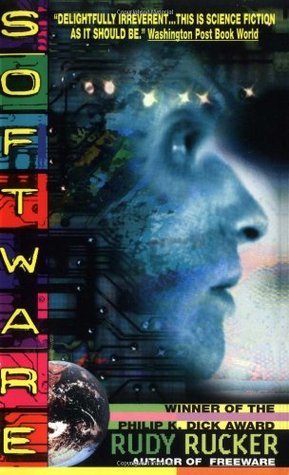
"A robot, or a person, has two parts: hardware and software. The hardware is the actual physical material involved, and the software is the pattern in which the material is arranged. Your brain is hardware, but the information in the brain is software."
Spoiler Warning for Software by Rudy Rucker.
As one of the formative novels of cyberpunk it is somewhat surprising to see a more nuanced take on technology. Another surprise was equating freedom with psychotropic drugs reminiscent of the mindset in the mid 60's hedonistic hippy youth movement instead of a more punk aesthetic. This, for me, ends up being the most interesting aspect of this cyberpunk fiction… and the worst.
"after fifty years her responses to the music were all but extinguished"
Cobb Anderson, now old and dying, created sentient robots that can evolve. These robots, called the "boppers", have formed an anarchistic society on the moon having freed themselves from their enslavement to humanity. The big boppers are convinced that the inevitable, perfected state of being for both human and machine alike is to form one being. One consciousness. As a result, a civil war, of sorts, has broken out on the moon between the big boppers with this goal, and those little boppers who don't agree with this plan.
"We boppers use human organs to seed our tissue farms. We use brain-tapes for simulators in some of our robot-remotes. Like me. And we just like brains anyhow, even the ones we don't actually use. A human mind is a beautiful thing."
As time grows short in this conflict the original big bopper, Ralph Numbers, decides to offer Cobb immortality by taping his brain, destroying his body and mind in the process and placing his "software" into a remote robot body.
While there is some technophobia in that the boppers instigating the removal of autonomy with their plan to tape humans, they themselves vary in personality and will as much as humans. When Cobb finally does end up in a remote body he has as much autonomy as he ostensibly did in human society; he just wasn't aware of it. He's free only within confines and immediately becomes a target for Mooney, a detective who suspects robots are being sent to earth from the moon but has no actual proof of this.
"It doesn't have to go into the program, Sta-Hi. It is everywhere. It is just existence itself. All consciousness is One. The One is God. God is pure existence unmodified." Cobb's voice was intense, evangelical. "A person is just hardware plus software plus existence."
Where the book really shines is this diversion from the way it explores selfhood from other cyberpunk books, which typically use cybernetics or cyberspace. This is the first time I've read a first wave cyberpunk book that directly explores selfhood by transferring the consciousness of someone else into a different body entirely, and permanently.
This notion that the influx of the baby boomers resulted in an America that could not pay out retirement and so instead gave this old generation, called "pheezers" the entire state of Florida; resulting in a bunch of old hippies living a strange retirement lifestyle for the rest of their days is also quite novel to me.
"It is sad that you choose not to understand what you yourself have created."
Ironically, in their anarchistic society the big boppers have managed to fetishize the human mind which created them. In unlocking the ability to read and record the data within the brain they believe they are able to replicate something they don't truly understand. This parallels Cobbs own decisions and revelation in the book except that he knows that some things are unknowable, which is why he knew the key to the boppers development was to unlock their potential to evolve and grow on their own. The Boppers ability to replicate something and therefor commodify it, have resulted in them dehumanizing the thing they claim to be beautiful: the human mind.
"Cobb Anderson's brain had been dissected, but the software that made up his mind had been preserved. The idea of "self" is, after all, just another idea, a symbol in the software."
Cobb feels like his same self even as a manufactured robot and despite uncanny experiences that follow. He's not able to get drunk or have sex without a subroutine that simulates it; isn't nourished by food, merely holding it within his body like refuse. Cobb can't tell the difference between emulating his selfhood, believing his thoughts and memories are his own and so he must be the same. Though that may well be the case, they are also compromised by the manufacturers of his body in that they are able to turn him on and off, yet say they cannot modify his free will. It's "all or nothing"... But what is the value of free will in this context?
We don't want you to feel . . . " "Like a remote?" "Right. You're designed for full autonomy, Cobb. If you can help us, so much the better. But there's no way we would have edited out your free will . . . even if we knew how. You're still entirely your own man."
In the end, there is no actual freedom to be obtained. His immortality becomes a hollow existence shared with the other bopper entity in his machine body; just as humans must contend with societal structures and norms on a daily basis dictating their navigation through life, so must Cobb feel the hand of this Artificial Life on an override switch that could displace his consciousness at any moment. In the end, his perception of freedom leads to him furthering only the goals of the bopper. The only gain is a perpetual state of enslavement. Forever.
"It was hard to read the emotion in Mr. Frostee's even voice. Was revenge the motive? Or was it just a collector's lust for ownership?"
The pheezer generations' freedom is not framed in a desirable light either. They have Florida and get food distributed to them... but no one seems to be truly happy with this outcome. Mostly, they are aimless; more resembling children than adults. They are devoid of responsibility and seem to have no goals or drive in the twilight of their years.
Another character, Sta-Hi (stay-high) has no ambition or dreams at all; though he's a younger generation than the pheezers, his idea of life does not extend beyond staying in a perpetual chemical bliss. While this "no win" depiction of life is normal for cyberpunk… the made-up futuristic colloquial terms used by this generation sound as stupid as the life Sta-Hi leads. Whether this is intentional was not clear to me because the narrative continually reiterates these things in both positive and negative lights. I assume because it is attempting to frame drugs in a neutral light as well; ostensibly to comment on humanity rather than the technology itself. These large swaths of the narrative were always annoying to me, however; almost like being the only sober person at a party where everyone else has been drinking.
Had the fiction been centered on the philosophical aspects and done away with Cobb's counterpart Sta-Hi, this would have been a much more enjoyable book for me; even if these sections are used in the narrative structure to display the facile nature of both existences the characters lead. The latter half of the book, containing almost all the philosophy is the "meat" of the book for me and revealed how little the first half I had actually enjoyed.
However, overall it was a positive experience with the ending being a strong one.
"It's like waves, Cobb. Waves on the beach. Sometimes a wave comes up very far, past the tide line. A wave like that can carve out a new channel. The big boppers were a new channel. A higher form of life. But now we're sliding back . . . back into the sea, the sea of possibility. It doesn't matter. It's right, what you told the kids. Possible existence is as good as real existence."



